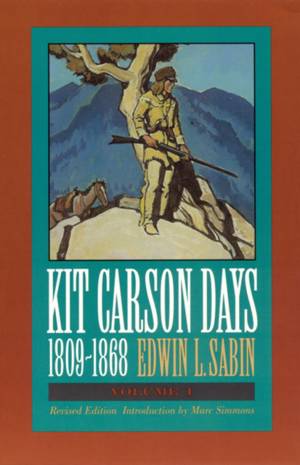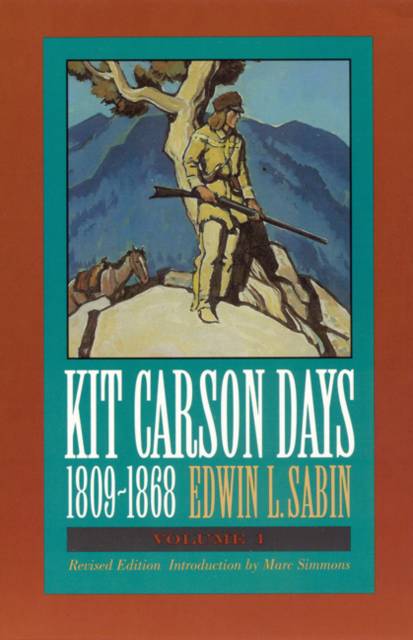
- Afhalen na 1 uur in een winkel met voorraad
- Gratis thuislevering in België vanaf € 30
- Ruim aanbod met 7 miljoen producten
- Afhalen na 1 uur in een winkel met voorraad
- Gratis thuislevering in België vanaf € 30
- Ruim aanbod met 7 miljoen producten
Zoeken
Kit Carson Days, 1809-1868, Vol 1
Adventures in the Path of Empire, Volume 1 (Revised Edition)
Edwin L Sabin
Paperback | Engels
€ 33,45
+ 66 punten
Omschrijving
Volume 1 of Kit Carson Days shows Carson running away from his Missouri home at age fifteen in 1826. He joins a caravan headed toward Santa Fe and in the coming years shuttles between poverty and prosperity as a wrangler, teamster, and trapper. He lives all over the unplotted West, helping to open trails, harvesting fur, befriending mountain men, and fighting and trading with Indians. Carson's reputation grows after John C. Frémont engages him as guide in 1842. He proves indispensable to the Pathfinder in three expeditions and plays a part in the Bear Flag Rebellion. The first volume is an encyclopedia of activity in the West during the first part of the nineteenth century, bringing into play such figures as Ewing Young, William Ashley, Jim Bridger, Jedediah Smith, Thomas Fitzpatrick, Hugh Glass, John Colter, William Sublette, Marcus and Narcissa Whitman, William Bent, Stephen Kearny, President James K. Polk, John Sutter, and Nathaniel Wyeth. This revised edition includes vivid chapters on the mountain man, his character, habits, clothing, and equipment. Volume 2 begins with Carson carrying the news of the conquest of California across the country to Washington, D.C., stopping en route to see his wife in Taos, New Mexico. The older Carson consolidates his fame as a courier, scout, soldier, and Indian agent. Americans, avid for newfound gold, turn to him as an authority on trail lore, and the government recognizes his usefulness in dealing with "the Indian problem." Carson is seen against the larger background of incessant warfare in the Southwest after midcentury. He fights the Kiowas at Adobe Walls, chases the Apaches, and forces the Navajos into the Bosque Redondo. He fights in the Civil War and retires at fifty-eight--but dies two years later in 1868.
Specificaties
Betrokkenen
- Auteur(s):
- Uitgeverij:
Inhoud
- Aantal bladzijden:
- 490
- Taal:
- Engels
Eigenschappen
- Productcode (EAN):
- 9780803292376
- Verschijningsdatum:
- 1/09/1995
- Uitvoering:
- Paperback
- Formaat:
- Trade paperback (VS)
- Afmetingen:
- 152 mm x 227 mm
- Gewicht:
- 671 g

Alleen bij Standaard Boekhandel
+ 66 punten op je klantenkaart van Standaard Boekhandel
Beoordelingen
We publiceren alleen reviews die voldoen aan de voorwaarden voor reviews. Bekijk onze voorwaarden voor reviews.











